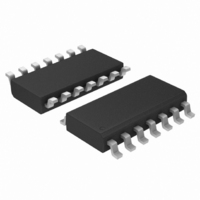AMIS41683CANN1G ON Semiconductor, AMIS41683CANN1G Datasheet - Page 5

AMIS41683CANN1G
Manufacturer Part Number
AMIS41683CANN1G
Description
TRANSCEIVER CAN 3.3V 14-SOIC
Manufacturer
ON Semiconductor
Type
Transceiverr
Datasheet
1.AMIS41683CANN1G.pdf
(16 pages)
Specifications of AMIS41683CANN1G
Number Of Drivers/receivers
1/1
Protocol
CAN
Voltage - Supply
4.75 V ~ 5.25 V
Mounting Type
Surface Mount
Package / Case
14-SOIC (3.9mm Width), 14-SOL
Operating Supply Voltage
3.3 V
Supply Current
8 mA
Operating Temperature Range
- 40 C to + 125 C
Mounting Style
SMD/SMT
Product
CAN
Lead Free Status / RoHS Status
Lead free / RoHS Compliant
Other names
766-1017
Available stocks
Company
Part Number
Manufacturer
Quantity
Price
Company:
Part Number:
AMIS41683CANN1G
Manufacturer:
ON Semiconductor
Quantity:
35
Description
works as an interface between the CAN protocol controller
and the physical wires of the CAN bus (see Figure 2). It is
primarily intended for low speed applications, up to 125 kB,
in passenger cars. The device provides differential transmit
capability to the CAN bus and differential receive capability
to the CAN controller.
ERR Pins), which allow the user to use external pullup
resistors to the required supply voltage; this can be 5 V or
3.3 V.
Together with matched CANL and CANH output stages,
this allows the use of an unshielded twisted pair or a parallel
pair of wires for the bus lines.
transmission mode, differential or single−wire transmission.
Together with the transmission mode, the failure detector
will configure the output stages in such a way that excessive
currents are avoided and the circuit returns to normal
operation when the error is removed.
guarantees reception under worst case conditions and
together with the integrated filter the circuit realizes an
excellent immunity against EMS. The receivers connected
to pins CANH and CANL have threshold voltages that
ensure a maximum noise margin in single−wire mode.
prevents the AMIS−41682 from driving the bus lines to a
permanent dominant state.
Failure Detector
mode. After the detection of a single bus failure the detector
AMIS−41682 is a fault tolerant CAN transceiver which
The AMIS−41683 has open−drain outputs (RXD and
To reduce EME, the rise and fall slope are limited.
The failure detection logic automatically selects a suitable
A high common−mode range for the differential receiver
A timer has been integrated at Pin TXD. This timer
The failure detector is fully active in the normal operating
FUNCTIONAL DESCRIPTION
http://onsemi.com
5
switches to the appropriate mode. The different wiring
failures are depicted in Figure 4. The figure also indicates
the effect of the different wiring failures on the transmitter
and the receiver. The detection circuit itself is not depicted.
at 3 V (V
noise margin as high as possible in the normal operating
mode and in the event of failures 1, 2, 4, and 6a. These
failures, or recovery from them, do not destroy ongoing
transmissions. During the failure, reception is still done by
the differential receiver and the transmitter stays fully
active.
single−wire modes are activated after a certain delay time.
When the bus failure disappears for another time delay, the
transceiver switches back to the differential mode. When
one of the bus failures 3, 5, 6, 6a, and 7 is detected, the
defective bus wire is disabled by switching off the affected
bus termination and the respective output stage. A wake−up
from sleep mode via the bus is possible either by way of a
dominant CANH or CANL line. This ensures that a
wake−up is possible even if one of the failures 1 to 7 occurs.
If any of the wiring failure occurs, the output signal on pin
ERR will become low. On error recovery, the output signal
on pin ERR will become high again.
performance (both immunity and emission) is worse than in
the differential mode. The integrated receiver filters
suppress any HF noise induced into the bus wires. The
cut−off frequency of these filters is a compromise between
propagation delay and HF suppression. In the single−wire
mode, LF noise cannot be distinguished from the required
signal.
The differential receiver threshold voltage is typically set
To avoid false triggering by external RF influences the
During all single−wire transmissions, the EMC
CC
= 5 V). This ensures correct reception with a











